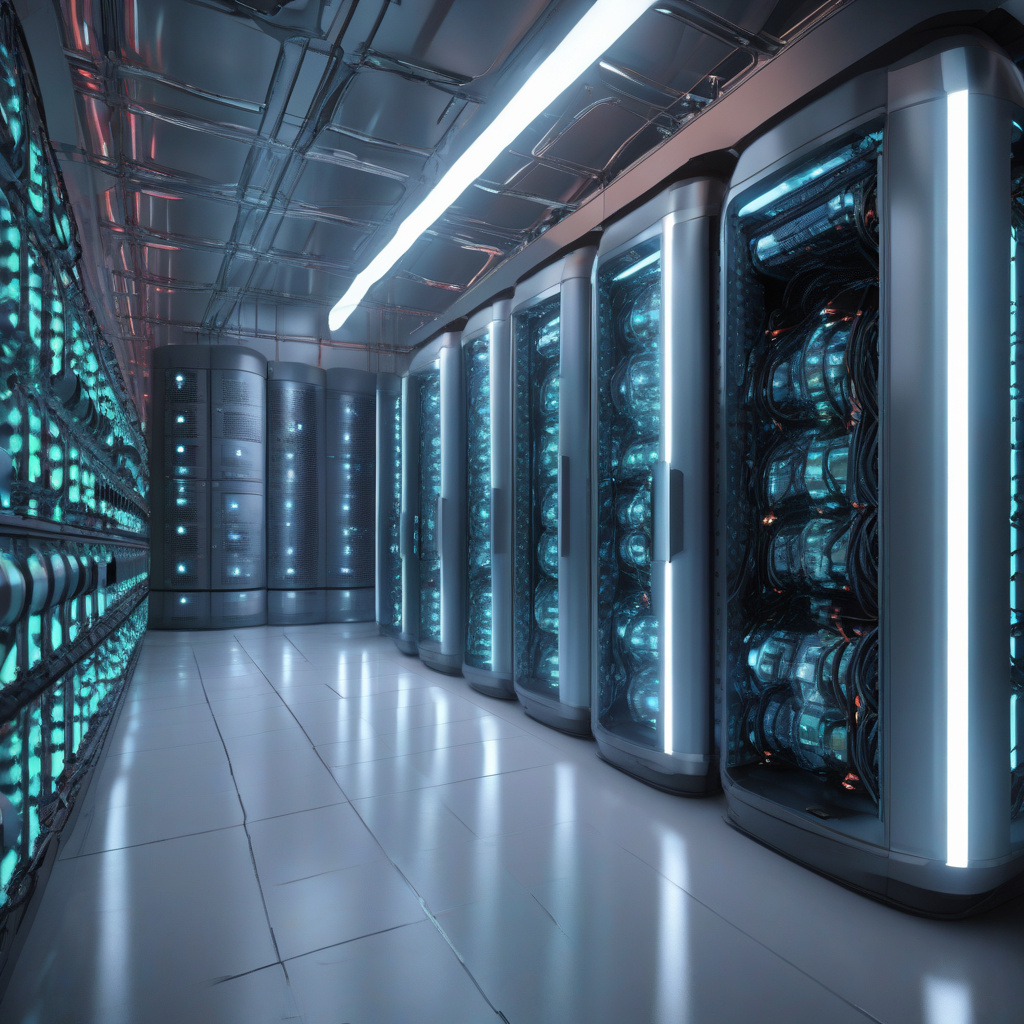Nuclear-Linked Hydrogen Plan Aims to Feed AI-Fueled Energy-Hungry Data Centers
Canada-based First Hydrogen Corp. says it will begin designing small modular nuclear reactors (SMRs) with the aim of revolutionizing the way energy is produced for data centers. The intersection of nuclear power and hydrogen technology could pave the way for a more sustainable and efficient energy solution to meet the growing demands of data centers powered by artificial intelligence (AI).
Data centers are notorious energy guzzlers, consuming vast amounts of electricity to power and cool the servers that store and process data. With the rise of AI and machine learning applications, the demand for computing power continues to surge, putting pressure on the existing energy infrastructure to keep up. Traditional sources of energy, such as fossil fuels, are not only finite but also contribute to environmental degradation through greenhouse gas emissions.
This is where the concept of nuclear-linked hydrogen comes into play. By leveraging SMRs to generate nuclear power, First Hydrogen Corp. aims to produce clean electricity that can then be used to electrolyze water and produce hydrogen. This hydrogen can serve as a sustainable energy carrier, storing the excess energy generated by nuclear reactors and providing a flexible power source for data centers.
One of the key advantages of this approach is the ability to decouple energy production from energy consumption in data centers. By using hydrogen as an intermediary, data centers can tap into a continuous and reliable energy supply, regardless of fluctuations in electricity demand or availability. This not only enhances the resilience of data center operations but also contributes to a more stable grid overall.
Moreover, the use of nuclear power ensures a high level of energy density, meaning that a small amount of nuclear fuel can generate a significant amount of electricity. SMRs, in particular, offer scalability and modularity, allowing for the deployment of smaller reactors that can be easily integrated into existing energy infrastructure. This flexibility is crucial for meeting the specific energy needs of data centers, which often require on-site power generation for optimal performance.
From a sustainability perspective, nuclear-linked hydrogen presents a compelling case for reducing carbon emissions and mitigating the environmental impact of data center operations. By transitioning towards a zero-emission energy system, data centers can align with global efforts to combat climate change and promote a greener future for the digital economy.
While the concept of nuclear-linked hydrogen holds great promise, there are still challenges to overcome in terms of regulatory approval, public perception, and cost-effectiveness. Nuclear power, in particular, has faced scrutiny due to safety concerns and the management of radioactive waste. Addressing these issues will be crucial in gaining acceptance for nuclear-linked hydrogen as a viable energy solution for data centers.
In conclusion, the fusion of nuclear power and hydrogen technology could mark a significant milestone in the quest for sustainable energy for AI-fueled data centers. By reimagining the way energy is produced, stored, and utilized, First Hydrogen Corp. is pioneering a new pathway towards a more efficient and environmentally friendly energy ecosystem for the digital age.
energy, sustainability, data centers, nuclear power, hydrogen












